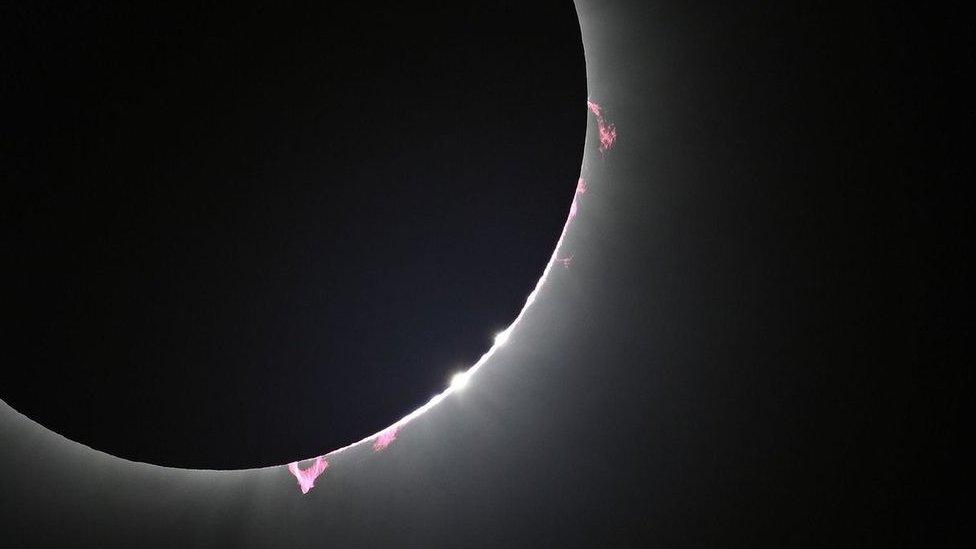Solar eclipse 2024: When and where is the next eclipse in the US?
- Published

Tens of millions of people across the US, Canada and Mexico were treated to a total solar eclipse on Monday.
Whole cities were plunged into darkness as the Moon briefly blocked out the Sun's rays in areas along what is known as the path of totality.
Awestruck stargazers - or those who missed the event because of cloud cover or other commitments - now want to know when the phenomenon can next be observed.
This time, the interval will be much longer than the previous six-year wait. The next total eclipse in the contiguous United States will not happen for more than 20 years - and will be much more fleeting.
When and where is it?
It will happen on 23 August 2044 and will appear in Greenland before becoming visible in Canada, according to non-profit organisation the Planetary Society.
It will be visible in only three US states: North and South Dakota and Montana.
There will then be another event the following year, in 2045, that will be possible to witness coast to coast across the US, as well as parts of Latin America.
Solar eclipses themselves are not that rare - in fact, there are about two to four that occur per year.
But the chances of seeing a total eclipse are much rarer. The Earth is quite big and most of it is covered by oceans. More often than not, humans do not get to see one in person.
There will be a total eclipse visible over Alaska - which is not part of the contiguous US - on 30 March 2033.
Where else will an eclipse occur before then?
The next total eclipse anywhere in the world will be on 12 August 2026, which Nasa says will be visible over Greenland, Iceland, Spain, Russia and a small area of Portugal.
Other areas including the UK, Africa and North America will experience a partial eclipse - more on this below.
Remind me - how does an eclipse happen?
A solar eclipse occurs when the Moon moves between the Earth and the Sun, blocking some or all of the Sun's rays from reaching the Earth.
The phenomenon is a cosmic event, requiring the Sun, the Moon and the Earth to be in just the right alignment for the Moon to cast a shadow on our planet.
When this happens, the Moon casts two types of shadow.
One results in a partial solar eclipse, which obscures only part of the Sun.
The other - and the most spectacular - is the total solar eclipse. When this happens, the Sun is entirely obscured by the Moon, save for a visible ring of light in the sky.
- Published8 April
- Published9 April